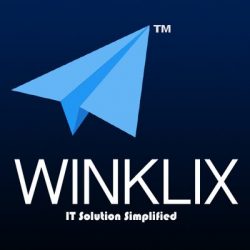A Salesforce consultant in Dubai is helping financial institutions transform their operations and customer experiences. With the finance industry evolving rapidly, working with expert Salesforce consultants and developers ensures tailored CRM solutions that meet regulatory requirements and improve efficiency across banks, fintechs, and investment firms.
explore more about : Salesforce Implementation Dubai
Why Salesforce Matters for Dubai’s Finance Industry
Let’s face it: competition here is fierce. If you’re not keeping up, you’re falling behind. Salesforce brings a few things to the table that make a real difference:
- You get live data at your fingertips.
- Managing client relationships feels less like a juggling act.
- Compliance and reporting run on autopilot, so you can breathe a little easier.
- Every customer gets a journey that actually feels personal.
With a good Salesforce consultant in Dubai, rolling out these tools isn’t a headache. They help you get it right the first time, and set you up for wins down the road.
What Salesforce Developers Do in Dubai
A Salesforce developer in Dubai is basically the translator between business needs and the tech behind the scenes. Here’s what they actually do:
- Tweak Salesforce so it fits how finance teams work.
- Take the pain out of approvals, onboarding, and reporting with smart automation.
- Connect Salesforce to whatever banking or fintech systems you already use.
- Build dashboards so you don’t have to guess about performance.
How Salesforce Consulting Partners in Dubai Make a Difference
A Salesforce consulting partner in Dubai isn’t just there for the setup. They look at how you do things now, spot what’s slowing you down, and design CRM solutions that actually fit your goals. They’re all about:
- Figuring out what’s working—and what isn’t.
- Building solutions that match how your business runs.
- Locking down data security and making sure you’re staying compliant.
- Training your team so everyone’s on board.
With the right partner, you’re not stuck bending your business to fit the software. The software bends to you.
What Dubai’s Financial Firms Get from Salesforce
When Dubai’s finance teams use Salesforce, the difference is obvious:
- Customers get onboarded faster.
- Relationships with clients get stronger.
- Less time wasted on clunky processes.
- Decisions based on real-time data, not hunches.
- Automation that keeps you on the right side of the rules.
Custom Salesforce setups let teams deliver smooth, personal service—without burning out.
Why Work with Salesforce Consultants in Dubai
If you want a CRM that actually works for your business, you need people who’ve seen it all. Salesforce consultants in Dubai bring:
- Real know-how in financial services.
- Support from start to finish, not just a one-time install.
- Custom setups that fit your business, not a copy-paste solution.
- Systems that can grow with you.
They make sure your CRM isn’t just another piece of software—it’s a real asset.
Wrapping Up
Salesforce is shaking things up for Dubai’s financial sector. With the right consultants and developers, you can build a CRM that makes your clients happy, keeps operations tight, and sets you up for growth that lasts.
FAQs
- What does a Salesforce developer in Dubai actually do for finance teams?
They customize Salesforce, automate your daily workflows, and connect the CRM to your existing financial systems. - Why should banks and financial firms call in Salesforce consultants in Dubai?
Consultants tailor the CRM to your needs, boost efficiency, and help you stay compliant. - Can Salesforce handle financial services automation?
Definitely. It streamlines approvals, reporting, customer onboarding, and even personalizes how you talk to clients. - Will Salesforce consulting partners in Dubai help train our team?
Absolutely. They walk your staff through adoption and best practices so nobody’s left behind. - Is Salesforce a good fit for both banks and fintech startups?
For sure. Whether you’re a small startup or a big bank, Salesforce can scale to match your needs.




